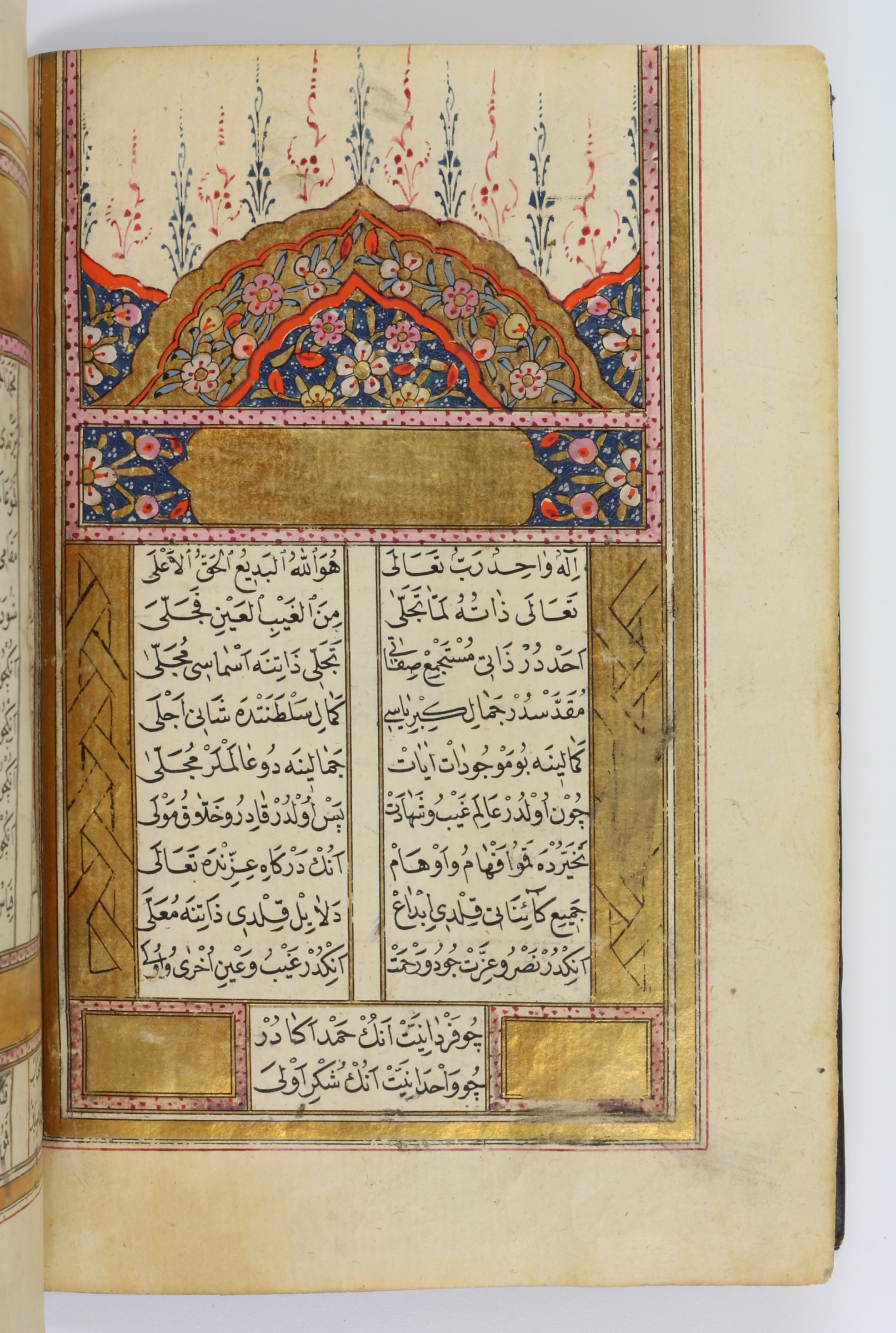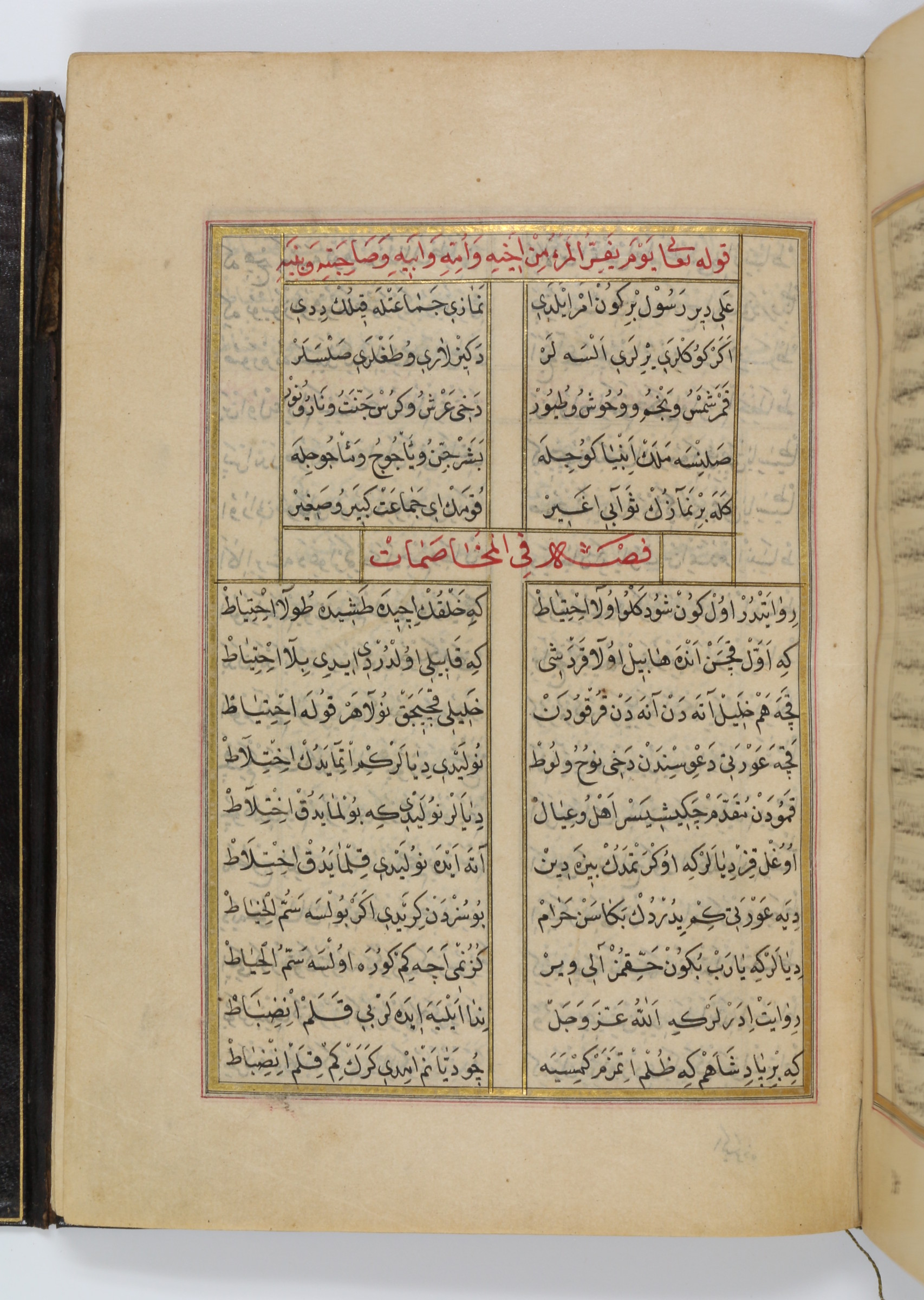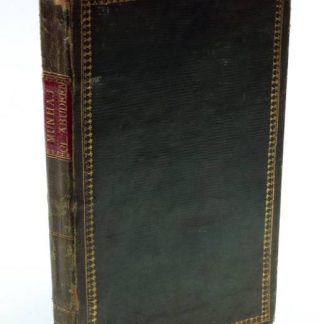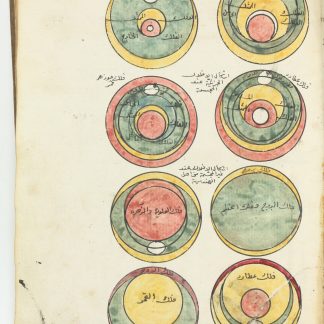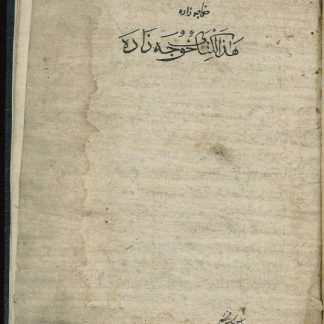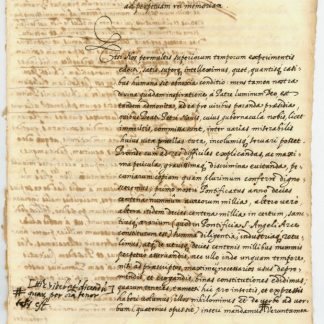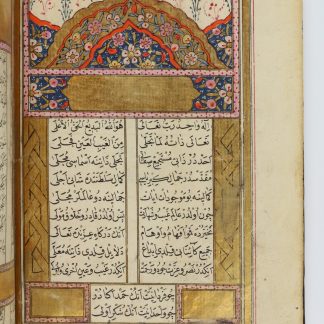The Sunsets of Time
Kitab al-Muhammadiyah (Kitâbü Muhammediyye fî na'ti seyyidi'l-âlemîn habîbillâhi'l-a'zam Ebi'l-Kâsim Muhammedini'l-Mustafâ).
8vo (150 x 206 mm). (564) pp. Ottoman Turkish and Arabic manuscript written in Naskh script on polished oriental paper. 2 columns, 17 lines. Black ink; chapter headings in red. Text ruled in gilt, red and black; first two pages have attractive 'unwan decorations in gilt, red, lapislazuli, pink, and orange; final page has gilt floral scrollwork decoration. Gilded line decorations on some pages, a red and gillt inscribed figure known as the "Flag of the Prophet on the Day of Judgment" (Liwa al-Hamd) on one page. 19th century oriental brown leather binding with fore-edge flap, decorated with gilt borders and lozenge-shaped ornamentation to both covers. Marbled endpapers.
€ 12,500.00
Early Turkish manuscript of the "Magharib al-Zaman" ("Sunsets of Time"), a widely popular devotional work on the Prophet Muhammad, first written in Arabic in 1449 by the Ottoman Sufi poet Yazicioglu Mehmet (d. 1491) and translated into Ottoman Turkish by his younger brother Ahmed Bican. Mehmet, a native of the Gallipoli peninsula, was a follower of Haci Bayram-i Veli (1352-1430) and was influenced by the writings of Andalusian mystic Ibn 'Arabi. The earliest printed edition appeared in 1842 at Istanbul's Military Press.
Comprising some 9,000 couplets, the "Muhammadiyah" is one of the longest works in Turkish literature, but its style is easily accessible, and it contributed much to the formation of Ottoman Sufi culture. Written to disseminate the basic tenets of Islam among the common people, it covers Muhammad's biography, various aspects of Muslim devotion, and eschatological matters, including Gog and Magog, the Sun rising in the west, and the Day of Resurrection. Mehmet is notably preoccupied with the eschatological role of Jesus and of the Ottoman conquest of Constantinople, which he anticipated by several years.
Anonymously copied (as common for religious texts), this manuscript includes occasional explanations and Qur'an verses that are extraneous to Yazicioglu's text and were introduced by the scribe (or by the copyist of the MS he followed). Among the appealing decorations the first two leaves stand out, as does the gilt depiction of the Prophet's standard, "Liwa al-Hamd" (Banner of Praise), which is to be unfurled on the Day of Judgment. Three phrases written in red ink appear on this banner: "Al-Hamdu Lillahi Rabbil-'Alamin" (Praise be to God, Lord of the Universes), "Bi-smi llahi r-rahmani r-rahim" (In the name of Allah, the Most Gracious, the Most Merciful), and "La ilaha illallah, Muhammadun rasulullah" (There is no god but Allah and Muhammad is messenger of Allah).
Occasional light brownstaining, mainly confined to margins; generally very finely preserved. The first leaf of the book bears a faint Ottoman note of acquisition from the 19th century: "Isbu bin iki yüz doksan bes senesi Zilkade'nin yigirmi üçüncü sali günü yüz elli gurus fiyat" ("This book was bought for 150 Kurush on 23 Dhu al-Qadah, 1295 H" [18 November 1878 CE]. A complete list of the individual chapter titles is available on request.
Cf. J. Spencer Trimingham, The Sufi orders in Islam (Oxford, 1971); Arin Shawkat Salamah-Qudsi, Sufism and Early Islamic Piety: Personal and Communal Dynamics (Cambridge, 2018).

